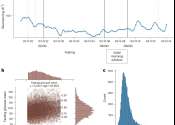Researchers find glucose levels of nondiabetic people vary more than thought
A medical researcher at Tel Aviv University, working with a group of computer scientists at the Weizmann Institute of Science, both in Israel, has found that fasting glucose levels in nondiabetic people vary more than previously ...









